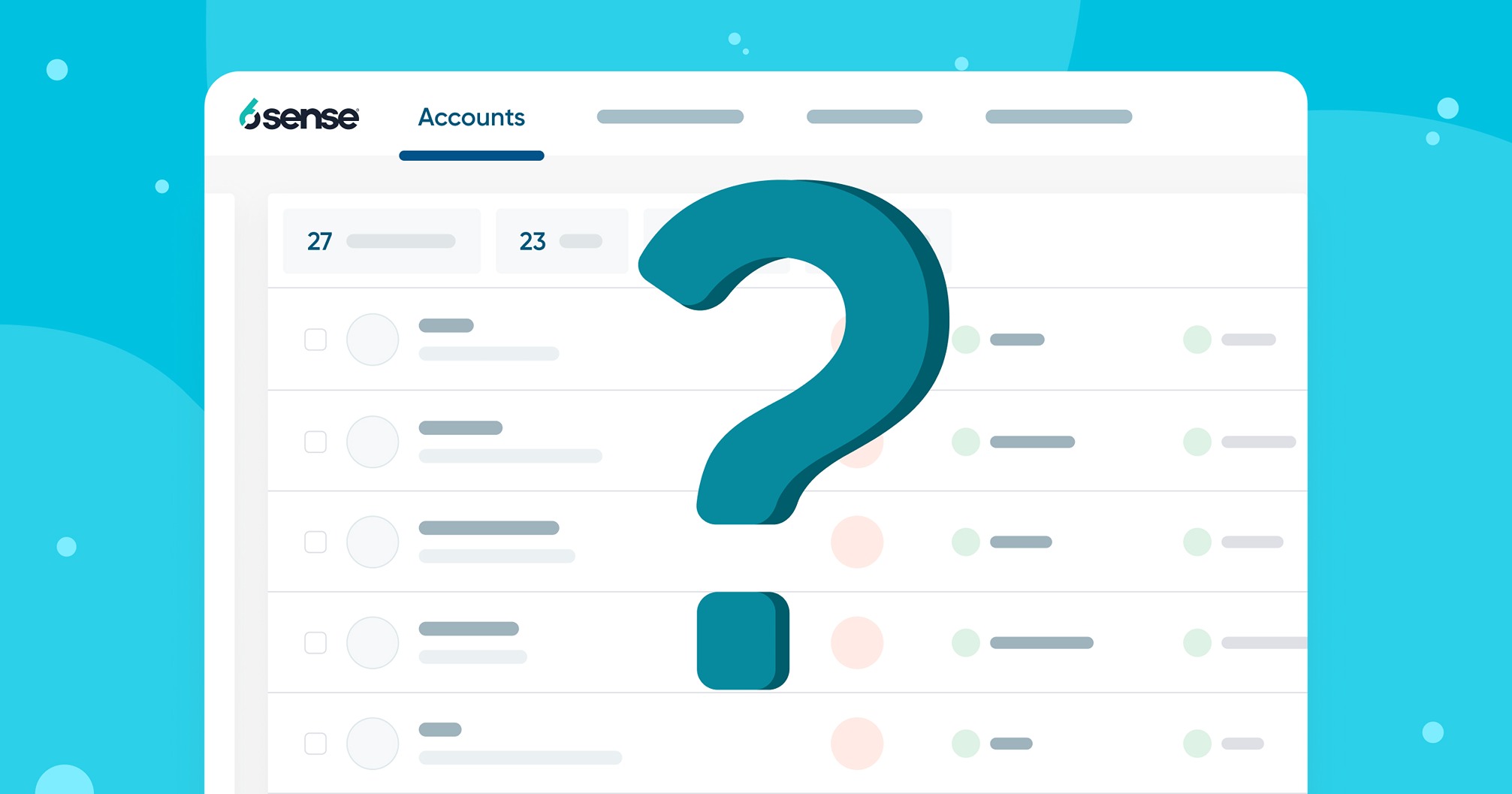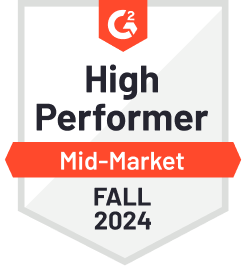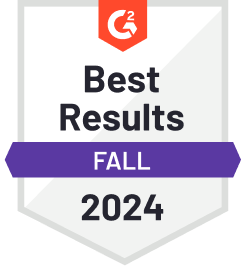As competition for customer attention intensifies across industries, organizations invest record amounts into owned platforms to capture lead interest. The global lead generation solutions market is projected to balloon from $3.1 billion to over $15 billion in annual revenue by 2031— signifying an important need to stay ahead as a marketer looking to expand lead generation goals.
70 Top Lead Generation Statistics to Remember in 2024 – 2750 Words
To help make sense of this rapidly evolving landscape, we compiled 70 need-to-know lead generation statistics for 2024. This definitive benchmark data spotlights the latest trends, most effective tactics, and critical challenges around generating and nurturing leads. From global forecasts to channel-specific metrics, these numbers create an analytical framework for understanding the state of play.
General Lead Generation Statistics
Lead generation is the lifeblood of any successful marketing and sales strategy. Understanding the latest trends and benchmarks around lead gen sheds light on what’s working, where there’s room for improvement, and how your strategy stacks up against your competition.
- The global lead generation solutions market amounted to $3.1 billion in revenue in 2021, projected to reach $15.5 billion by 2031, representing skyrocketing 17.48% compound annual growth.
This explosive expansion highlights the soaring importance of optimized lead gen for hitting revenue goals.
- 87% of polled marketers admitted their company data is currently their most under-utilized asset.
With most marketers confessing they fail to maximize data value, there is tremendous potential to further enhance lead gen through segmentation, profiling, predictive lead scoring, and similar methods.
- Over 50% of surveyed sales leaders currently use sales enablement content, with 79% declaring it essential for closing deals, according to a major study.
This data shows how vital content remains for moving leads down the funnel by resolving questions, needs, and concerns.
- Businesses leveraging data-driven lead generation strategies drive 5 to 8 times higher ROI compared to those who do not take a data-driven approach, researchers highlight.
This monumental ROI difference demonstrates the value of injecting data and analytics into lead generation and nurturing.
- The average ecommerce conversion rate increased by 6.87%, rising from 2.12% to 2.27% between November 2022 and November 2023 according to experts.
As economic uncertainty causes more consideration before purchases, strong nurturing can help convert these researched leads and lead to increased conversion rates in eCommerce.
- Marketers leveraging a single lead source of truth are 56% more likely to be tightly aligned with sales teams and 26% more apt to report highly effective marketing strategies this year over less aligned peers, researchers found.
This cross-departmental connectivity delivers major dividends for lead generation and beyond.
- 79% of polled respondents envision generative AI will transform their organization within three years.
By augmenting human capabilities, AI adoption promises to revolutionize lead scoring, qualification, nurturing, and more.
- Only 54% of surveyed marketers feel confident in accurately measuring ROI across digital channels.
As multi-channel lead generation expands, refining measurement and attribution clarifies what’s moving the needle in lead generation efforts.
B2B Lead Generation Statistics
For B2B marketers focused on complex sales, these B2B lead gen statistics showcase benchmarks across long decision cycles and multifaceted buying groups. The data highlights channel effectiveness and budget allocation in B2B lead generation.
- B2B technology has one of the lowest lead conversion rates at 1.7%.
This lower conversion rate highlights the intense competition and long sales cycles in high-consideration B2B tech purchases, where buyers conduct extensive research before committing.
- More B2B marketing teams are struggling to prove ROI this year than last, with connecting marketing performance to business outcomes being a significant challenge for 85% of B2B marketers.
This showcases the growing pressure to optimize budget allocation across platforms and campaigns. Difficulty proving campaign impact makes justifying sustained investments a hurdle. Solutions for B2B marketers include leveraging marketing attribution models beyond last-touch and deeper cross-channel analytics.
- B2B marketing budgets have held remarkably steady, with 70% expecting budgets to increase moderately or significantly in 2023, down only 4% from 2022 but still up from 2021.
This demonstrates continued commitment to digital initiatives for pipeline and revenue acceleration despite macroeconomic uncertainty. Marketers must balance maximizing channel mix and messaging while rationalizing spending in lead generation efforts.
- According to the 2023 WPromote State of B2B Digital Marketing Report, 36% of B2B marketers are diversifying their strategy across more channels in 2023, while 32% are consolidating across fewer proven high-performing channels.
This split highlights the testing of emerging platforms and optimization of core lead gen drivers. Strategic channel expansion targets wider audiences, while consolidation focuses budgets more narrowly.
- LinkedIn research shows that 53% of B2B marketers plan to use AI to increase efficiency to focus on higher-value work.
This indicates that over half see AI and automation as key to freeing up staff for complex sales interactions and strategy rather than repetitive tasks. However, taking advantage of AI requires careful impact assessment and integration with traditional lead generation workflows.
- A Gartner study shows B2B buyers are 1.8 times more likely to complete high-quality deals when engaging with supplier-provided digital providers alongside a sales representative, according to researchers.
This underscores the value of a consultative, insights-led selling approach and a tech-enabled journey for prospects. Personal guidance builds trust, while interactive lead-generation tools demonstrate product value.
- Paid ads and social efforts drive less than 10% of overall B2B website traffic, leads, and sales.
Despite their importance for brand-building, this low revenue impact highlights the need for integrated multi-channel strategies encompassing owned, earned, and other media. No one platform delivers B2B results on its own.
- Over half – 54% – of B2B sales and marketing lose touch with prospects after initial research stages, according to lead nurturing research.
This substantial lead leakage underscores the pressing need for robust nurturing across the long B2B decision cycles. Strategic content drips help remain top-of-mind amidst long sales timeframes when generating leads.
Outbound Lead Generation Statistics
While often challenging, outbound lead gen remains a staple for many marketing strategies. These statistics demonstrate the typical performance, costs, and best practices around tactics like cold calling and events.
- According to a Gartner report, according to researchers, 75% of surveyed B2B buyers prefer minimal sales representative involvement throughout their journey.
This highlights the desire for self-guided research with human selling efforts focused on final selection and onboarding rather than broad outreach.
- Outbound leads generated through tactics like cold calls, emails, and direct mail achieve just a 1.7% close rate on average, experts find.
This seemingly low conversion underscores why outbound requires exceptional targeting, relevant messaging, and integration with account-based strategies to see positive ROI.
- According to Belkins, 40% of polled outbound marketing leaders cite increasing brand awareness as a top campaign priority this year according to a study.
While delivering net-new leads is crucial, anchoring outreach around thought leadership and name recognition is similarly vital for long-term revenue impact.
- The finance sector sees close to 40% average open rates for outbound emails, followed by IT & business consulting at 30%, researchers highlight.
This showcases significant variance in response rates across industries that marketers need to factor into business contact database optimization and messaging personalization.
- Mailchimp email benchmark data shows open rates average around 34.23% across industries, though specific verticals like finance and IT see higher engagement, according to experts.
While benchmark data varies across industries and company sizes, this provides a baseline for gauging campaign performance. It also underscores the need to optimize sender reputation, contact targeting, and messaging.
- According to a SEMRush study, 52% of surveyed content marketing leaders cite building their brand’s community and social media marketing presence as a top priority for budget and resources this year.
This highlights that while lead conversion is vital, developing awareness, loyalty, and advocacy through owned platforms is equally important.
- This showcases growing investment in customizing outbound campaigns around buyer lifecycle stage, firmographics, location, and interests data.
- Despite accounting for over 80% of messages, email open rates plateauing has led 86% of polled marketers to expand into newer outbound channels beyond email.
Diversifying across messaging platforms is crucial for increasing total reach as traditional channels get saturated.
Inbound Lead Generation Statistics
Inbound lead generation through owned platforms allows for scalable growth and engagement. These statistics highlight Inbound’s rising central role amid double-digit gains across the website, content, social media, and other company channels.
- Inbound leads generated through owned platforms cost 61% less on average versus outbound cold outreach.
These massive cost savings highlight why inbound should anchor integrated marketing strategies, with outbound playing a supplemental role.
- According to the Hubspot 2023 State of Marketing Report, 85% of surveyed marketing leaders believe generative AI will substantially transform their content creation within 2024.
As AI adoption accelerates, machine-assisted copywriting and design promise more dynamic, personalized content to drive lead management and conversion.
- A DemandGen report shows 61% of polled database managers plan to increase budgets for collecting higher quality visitor data this year, according to researchers.
Better first-party data fuels personalized nurturing to boost inbound ROI.
- Leads from organic search conversions result in 14.6% close rates, demonstrating high-value creation versus other channels.
Optimizing content for ranking and intent helps capture pre-qualified searcher demand.
- 55% of surveyed businesses forecast conversational chatbots will surpass search engines as the top destination for quick answers by 2024, according to researchers.
As AI adoption accelerates, smart bots promise instantly responsive self-service alongside traditional knowledge base content.
- SEMRush research shows short-form video tops effectiveness for 43% of content marketers—far exceeding other formats—while potentially demanding fewer production resources, a major study found.
- 69% of polled respondents in a study currently tie content strategy to revenue goals, a massive increase from just 27% in 2022, per experts.
This shift showcases content’s pivotal, measurable role in marketing and lead generation processes.
- 71% of buyers downloaded multiple education assets over the past year to inform decisions, while 46% increased their content consumption overall.
Digital Marketing Lead Generation Statistics
Digital marketing has become the dominant driver of pipeline growth. These statistics showcase how owned websites, communities, and analytics translate into quantifiable sales impact.
- A Gartner study found businesses sourcing over 40% of net new sales leads from marketing average higher conversion rates than those more reliant on sales prospecting, researchers determined.
This demonstrates the revenue potential of investing in owned audience platforms.
- 28% of surveyed software buyers rank marketing technology as their top investment priority for 2024, trailing only IT security, according to experts.
- Customer marketing, content creation/strategy, and sales enablement are the top three areas seeing expanded 2023 budgets, according to 61% of polled B2B marketers in an Integrate survey.
- A full 79% of surveyed B2B marketers plan to incorporate more AI capabilities across their martech stacks and strategies this coming year, per a major report.
Accelerating AI adoption promises to enhance personalization, analytics, and campaign automation.
- 47% of buyers view 3-5 educational pieces of content from a company before engaging with sales reps, according to conversion funnel research.
This behavior highlights why tailored content strategies are crucial for initially capturing interest. Buyers clearly expect valuable self-service resources addressing their problems. Content plans should focus first on informing and building trust before direct sales outreach.
- 59% of surveyed B2B marketing leaders in a DemandGen report directly attribute revenue growth to qualified leads generated through owned channels.
Success with owned platforms proves their ability to influence buyers without paid media. Optimized websites, blogs, and social channels can drive significant business impact alone. Still, a large chunk of teams don’t quantify revenue tied back to owned assets indicating analytics and attribution capabilities need improvement.
- 27% of polled demand generation leaders have fully developed intent data strategies, while 25% leverage these insights without an overarching strategy.
This gap between data-driven targeting confidence and execution underscores disconnects between insights and activation. Better internal collaboration around priorities promises improved media optimization.
- According to researchers, 62% of surveyed marketers struggle to allocate budgets across fragmented digital media landscapes to reach their ideal buyers.
This shows the growing urgency of consolidated insights into channel and audience performance.
Email Lead Generation Statistics
Email persists as a trusted workhorse across all marketing funnels. These statistics highlight open rates, conversion, automation, and integration benchmarks that allow you to expand email lead generation.
- The average clickthrough rate across all industries is 1.86% as of 2024, according to aggregated benchmark data.
This baseline helps gauge campaign performance based on broader response trends in generating quality leads.
- Segmented email campaigns drive 30% more opens and 50% higher click rates than non-targeted batches.
Personalized messaging demonstrably boosts engagement across critical KPIs for lead generation.
- Over 47% of recipients open emails based solely on subject lines, with 69% reporting messages as spam for the same reason, according to researchers.
This underscores the outsized importance of compelling yet informative subject line writing for capturing email leads’ attention.
- With 2.8% B2C and 2.4% B2B conversion benchmarks, email remains one of the highest performing channels according to experts.
Continued innovation around deliverability, automation, and analytics strengthens this top role.
- One in three surveyed marketers currently use email marketing, with 87% planning to maintain or increase email investments in 2024, according to researchers.
Email continues holding immense strategic value for brands amid the social media boom. The vast majority foresee stable or growing email budgets next year rather than redirecting funds elsewhere. Still, the one-third non-adoption rate shows lingering barriers exist in applying email’s possibilities to lead generation.
- 78% of polled lead nurturing practitioners rank email as the most effective channel for sustaining engagement overtime periods.
The familiarity and trust email fosters over other mediums drives unrivaled durability. Email also enables personalization and automation at scale to continually re-engage contacts. However, fully activating email’s nurturing capacity requires tight process alignment across teams along with CRM and ESP platform expertise.
- 62 percent of researched email teams take 2+ weeks per broadcast, according to marketers surveyed in a major study.
Lengthy development cycles underscore the need for expanded teams, automation, and analytics. Slow output fails to meet the real-time nature of modern digital experiences. Strategic resource allocation can accelerate and enhance email productivity.
- Despite 87% of executives ranking email as critical, only 24% have email marketing strategies highly integrated across other channels, per researchers.
This gap highlights the untapped potential of centralized data and coordinated objectives. Brands overlook opportunities to unify experiences and leverage behavioral insights by keeping email siloed.
Social Media Lead Generation Statistics
Owned social media platforms provide invaluable real estate for brands aiming to drive awareness, engagement, and conversion via lead generation. As participation on networks like LinkedIn, Instagram, and TikTok continues rising, these benchmarks showcase how marketers generate leads and measure ROI.
- 97% of B2B marketers leverage LinkedIn for content distribution and lead generation based on researchers.
- 40% of surveyed B2B marketers rank LinkedIn as the most effective social platform for generating high-quality leads.
LinkedIn’s targeting and audience data facilitate connection with promising contacts. The social media platform’s business focus underpins the lead quality emphasis from marketers.
- 90% of polled social media marketers state that fostering digital communities is essential for channel success, per researchers.
This massive agreement highlights engagement and conversations as the lifeblood of owned social platforms as one of the best lead generation methods.
- Brands have seen a 33% increase in purchase intent after prospects view ads on LinkedIn versus benchmarks, researchers determined.
This underscores LinkedIn’s role in driving consideration alongside awareness in generating leads.
- In a Backlinko study, Viral list posts receive 218% more social shares than “how to” articles and 203% higher than for infographics, according to content experts.
This trend showcases the engagement potential of snackable numbered posts in lead generation strategies.
- In a Nielsen study, 61% of surveyed marketers are extremely or very confident in quantifying social media marketing ROI.
This reflects maturing analytics frameworks around fan growth and lead gen impact. Platform insights help attribute downstream sales activity to social campaigns. Still, a significant amount lacks confidence, indicating room for improvement in measurement standardization.
- One-third of polled email marketers cited social platforms as a top source of net new newsletter subscribers last year, according to researchers.
This integration between social media activity and email sign-ups is rising. Prominent subscription calls-to-action drive ongoing permission-based follow-up in generating leads. The branded content shared on social media likely compels many prospects to seek continued value from email updates.
Qualified Leads Statistics
Generating new net qualified leads means little without the ability to qualify and hand off high-quality leads to sales. These lead qualification data points diagnose key trouble spots in optimizing contact data, scoring processes, and defining readiness – highlighting significant demand from sales teams.
- 70% of marketers would rate their leads as “high quality” in a Hubspot study.
Perception alone can be misleading without data-driven lead generation scoring frameworks in place.
- 64% of respondents said their No. 1 data challenge in maintaining database quality is old or outdated data
This issue of “data decay” risks engagement and conversion of inactive contacts in marketers’ pursuit to generate leads.
- According to a DemandGen study, 49% of practitioners now use intent data in their lead qualification strategies.
Adoption signals a shift from purely static firmographic scoring of interest and consideration factors in a robust lead generation strategy.
- 60% of marketers in a DemandGen study indicated generating warmer, sales-ready leads is a top priority in 2023.
Success requires insight into personas and nuanced triggers motivating purchases. Content should move beyond awareness to address specific barriers and questions later in lead generation funnel stages.
- 45% of content marketers cite attracting valuable leads as a top challenge this year.
- Two-thirds of respondents currently work for data-driven sales teams, while 22% want to shift towards a metrics-based approach in generating leads.
- 75% of marketers still leverage third-party identifiers to augment leads, although impending regulations jeopardize this access, according to a Salesforce study.
Securing direct permissions and zero-party data is vital for compliance and personalization. This represents an essential imperative for B2B marketers in adapting future lead generation efforts.
- 58% of respondents find generating high-quality leads more difficult now than two years ago.
Economic, competitive, and attention dynamics make early interest capture an escalating challenge in lead generation efforts.
Lead Nurturing Statistics
Beyond initial lead capture comes nourishing promising individuals through ongoing value and personalized communication matched to their buyer journey. These nurturing benchmarks quantify response rates, revenue influence, and overarching maturity across organizations.
- A Gartner study shows effective account-based marketing (ABM) strategies increase pipeline conversion rates by 14% over broader efforts.
- 60% of marketing leaders believe balancing first-party data collection with privacy expectations will grow more difficult in 2023.
Regulations make securing consent and generating high-quality leads an escalating challenge.
- A DemandGen report shows that 43% of marketers think their current nurturing strategies need improvement.
Optimizing journeys against buyer signals remains an opportunity for most brands in lead nurturing strategies.
- The percentage of generated leads requiring additional nurturing dropped dramatically year-over-year, from 45% down to 20% of batches.
- Sustained lead nurturing email series achieve 4-10 times higher response rates versus one-off blasts.
This shows the exponential impact of coordinated, continual communication in helping generate leads.
- Despite the proven benefits, only 17% of surveyed content marketers ranked subscriber nurturing as a top priority this year.
- Of brands considering themselves successful at nurturing, 43% measure effectiveness through revenue impact and ROI.
Quantifying beyond superficial engagement puts focus on pipeline value.
FAQs About Lead Generation Statistics
Below are a few of the most frequently asked questions about lead generation statistics.
According to projections, the global B2B lead generation services market reached $1.9 billion in 2021 and is forecast to expand at nearly 12% CAGR to surpass $3.7 billion by 2027.
While modern benchmarks are limited, a 2017 analysis found organizations generate an average of 1,877 raw leads monthly. However, monthly volume varies dramatically by factors like industry, sales cycles, and marketing budget.
Yes, lead generation remains profitable for most B2B companies. When executed effectively, owned channels provide substantial ROI compared to outbound prospecting. This also hinges on your customer acquisition cost and closing rate, so ensure you run the numbers for a sustainable, long-term lead generation campaign.
Across industries, the average conversion rate is 2.9% according to benchmarks. For B2B ecommerce specifically, the typical yearly conversion is 2.1%. This wide variance highlights the need for tailored marketing strategies aligned to sales cycles.
What You Need to Remember About Lead Generation Statistics
The lead generation arena continues advancing at breakneck speed. As the numbers demonstrate, core channels like social media, email, and content marketing show no signs of slowing – while AI and marketing automation extend capabilities further. Seismic shifts in privacy regulation and consumer preferences raise new considerations as well.
Yet some fundamentals endure. High-intent traffic converts better—strategic messaging aligned to lifecycle stage sales. Insights unlocked from data optimize decisions at every turn. With sound strategies rooted in continuous testing and improvement, more leads turn into sales.
While no formula guarantees success, these 2024 benchmarks help set achievable targets to lead gen excellence. Measure against them to stay ahead of trends and ahead of the pack. With smart implementation, your strongest growth years still lie ahead.








